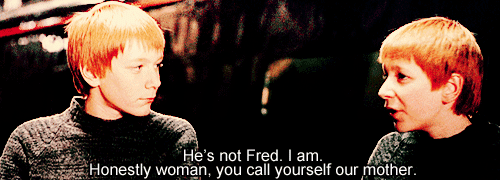It’s All Fools’ Day and so I’m devoting my April posts to books about the colourful court jester characters of children’s literature.

A number of celebrated authors have used court jester or fool protagonists, from picture books to young adult novels, capturing themes of free speech, self-expression, and of course, the importance of humor. Today, I feature picture books and chapter books for young readers and in mid-April, I’ll showcase Middle Grade and Young Adult novels. So, put on a jangling hat and check these titles out!
Jared Lester Fifth Grade Jester by Tanya Lloyd Kyi

Trouble-maker Jared Lester finds his calling as a present-day court jester, winning a school talent contest and earning a chance to perform for the Queen of England while she tours North America.
Once he discovers jesting, Jared is able to focus all his energy on his new passion and without realizing it, he becomes more determined, confident, and organized. Plus, it’s not just about getting attention by performing; Jared learns jesters can work in subtler ways, helping to diffuse arguments with their tricks—a skill that proves useful when playground bullies threaten his friends.
Sprinkled with amusing notebook entries from Jared’s conversations with jester-expert Professor Krinklecut, Kyi’s novel is equally sprinkled with life lessons about finding a healthy creative outlet for boundless energy.
The Little Jester by Helena Olofsson, Translated by Kjersti Board

Swedish author Helena Olofsson crafts a feel-good picture book tale about a little jester who seeks shelter at a monastery in France. He delights the monks with his tricks but is about to be thrown out by the Abbot, until the monks realize the jester’s performance has transformed their beloved painting of a weeping Madonna into a smiling Madonna.
Read The Little Jester aloud the same way you would an old fairy-tale or fable because the tone of the text is very similar. Olofsson’s illustrations also harken back to bygone times, painted in the style of illuminated manuscripts. She uses blue and gold for both the jester’s costume and the backgrounds of her drawings to evoke France and Catholicism as key elements of the setting.
Her little jester has barely any dialogue through the story. Rather, his actions and good-natured smile speak for themselves. Indeed, Olofsson aptly uses facial expression to portray the benevolent monks and the haughty Abbot. For Canadian readers, this skill may recall the similar talent of Sheldon Cohen, Roch Carrier’s illustrator. While it is the Madonna’s smile that makes the monks celebrate, it will be the little jester’s that lingers for adult and children alike.
The Jester Has Lost His Jingle by David Saltzman

Colourful illustrations leap from the page with as much charm and personality as the jester protagonist brought to life by the late cartoonist David Saltzman in this picture book quest.
Banished from his grumpy kingdom, the Jester and his talking sceptre Pharley set out to rediscover the world’s laughter. The Jester’s quest leads him to a modern city, through subways and hospitals, and brings the Jester’s once-upon-a-time and far-away relevance to the children of today. The way the story bursts through its fairy-tale frame into our world is a source of delight, and is reflected by the vibrant illustrations: when the Jester is in his kingdom, the text is framed by borders of Celtic knots, which disappear when he journeys into our world.
Like the laughter the jester rediscovers (it’s hidden within us all!), this rhyming tale is best shared with others. Saltzman’s use of alliteration and repetition, along with the changes in meter, come across most naturally when read aloud.
This picture book would make a wonderful discussion-starter for children aged 8-10, who are starting to become aware of the social issues hinted at in the story and to whom the author’s inspiring backstory could be introduced: Saltzman wrote and illustrated this call “to laugh at how silly and scary and wonderful this world of ours is” before passing away from cancer at age twenty-two.
Many Moons by James Thurber & Louis Slobodkin

James Thurber’s picture book tale features witty dialogue and presents poignant ideas. Having fallen ill from “a surfeit of raspberry tarts,” little Princess Lenore requires the moon as a cure. The King asks his wise men how to get it, but the court jester sagely asks the princess herself.
Later, when Lenore has the ‘moon’ from the jester, the real moon still shines in the sky. Here again, the jester has Lenore provide an explanation herself. She assures him that the moon grows back when it disappears, just like teeth, or flowers, or daylight. “I guess it is the same way with everything,” she says before falling asleep—a comforting, incredibly mature assurance about the renewal of life to leave with a child while reading this story aloud before they fall asleep.
References to the wise men’s wives doing sewing and baking date the story, but the key ideas presented are timeless and the humor ages well. Louis Slobodkin, who won the Caldecott-medal for Many Moons, illustrates with undulating black-line sketches and primary colours that convey the story with the same combination of cheekiness and grace that the story’s jester possesses.
***
As mentioned, I’ll be looking to “fool you twice” with a second list of reviews highlighting MG and YA novels that star court jesters. Until then, enjoy your April and join me in wishing a very happy birthday to Gred & Feorge.

Pictures courtesy:
#HelenaOlofsson #CourtJester #Books #Fool #TanyaLloydKyi #KjerstiBoard #picturebooks #TheLittleJester #JaredLesterFifthGradeJester #booklist #bookreviews #ManyMoons #DavidSaltzman #TheJesterHasLostHisJingle #childrensbooks #BookBlog #Jester #AprilFoolsDay #storytelling #AprilFools #AllFoolsDay #LouisSlobodkin #JamesThurber #childrensliterature

